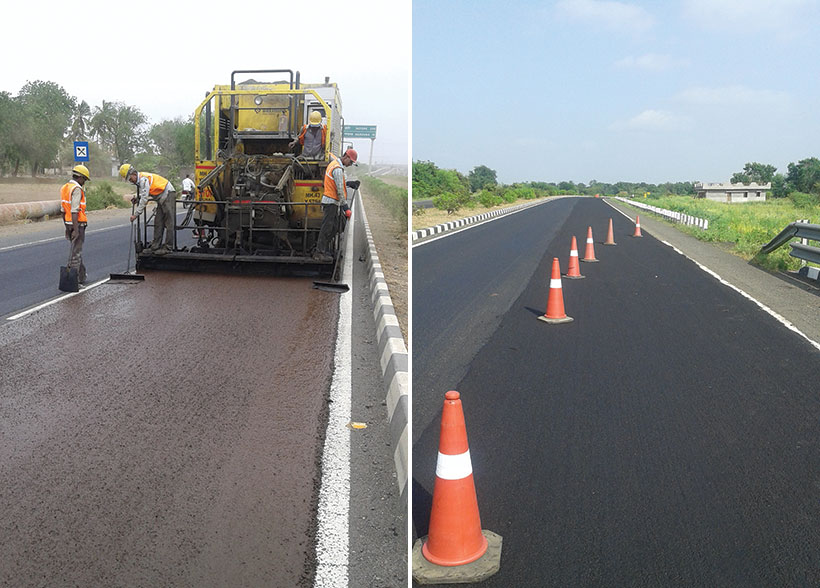Cold Asphalt Mixes for Indian Highways Environment Friendly Technology

Prof. Prithvi Singh Kandhal, Associate Director Emeritus, National Center for Asphalt Technology, Auburn University, Alabama USA
Introduction
Cold asphalt mix is produced by mixing unheated mineral aggregate with either emulsified bitumen or foamed bitumen. Unlike hot mix asphalt (HMA), cold asphalt mix does not require any heating of aggregate which makes it economical and relatively pollution-free (no objectionable fumes or odours). Production of cold asphalt mix does not require high investment in equipment, which makes it economical. It is also suitable for use in remote areas. Cold asphalt mixes can be used both for initial construction (100% virgin mixes) and for recycling of asphalt pavements.Cold asphalt mixes do have some limitations. These mixes should not be used when ambient temperatures under 10°C are expected during construction. Cold asphalt mixes are typically suitable for light to medium trafficked roads when used in base and surface courses. Since their structural strength is relatively lower than that of HMA, the pavement structure should be designed properly.
Virgin Cold Asphalt Mixes
Unlike recycled cold asphalt mixes, virgin cold asphalt mixes use 100% virgin aggregates and bitumen.Mix Types
Primarily two types of virgin cold asphalt mixes are used: Dense graded and Open graded. Dense graded mixes are continuously graded from the maximum aggregate size down to material passing 0.075 mm sieve size. Open graded mixes usually lack material passing 2.67 mm sieve and have high air voids.Slurry seal and microsurfacing can also be considered cold mixes although used as surface treatment. The slurry seal consists of a mixture of mineral aggregate (mostly fine aggregate), slow setting cationic bitumen emulsion, water and additives (if needed) proportioned, mixed and uniformly spread over a prepared surface. The mixture is free flowing like freshly made cement concrete and is applied with a self-propelled slurry seal machine. Microsurfacing is like slurry seal, the primary difference being the former uses a modified (polymer or rubber latex) bitumen emulsion. Untitled photographs in this article show application of microsurfacing.
Both slurry seal and microsurfacing have the following application limitations:
- should be used on existing bituminous surfaces,
- existing pavement should be structurally sound and should have good riding quality,
- existing bituminous surface should not have any severe distress except hairline cracks, oxidized (aged) road surface or polished surface, and
- should be applied to roads carrying low to medium traffic only. On heavy traffic roads both wear off prematurely especially in the wheel tracks.
This is a premium article available exclusively for our subscribers.
If you are already a subscriber, please Login
If not, subscribe now and get access to well researched articles & reports on infrastructure construction, equipment & machinery, innovations & technology, project reports, case studies, and more. All this by simply paying just ₹200/- for a month of complete portal access, or a discounted rate of ₹1000/- for a full year of access.













